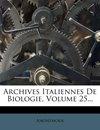Noradrenergic substrates sensing light within brainstem reticular formation as targets for light-induced behavioral and cardiovascular plasticity.
IF 0.8
4区 医学
Q4 NEUROSCIENCES
引用次数: 0
Abstract
The occurrence of pure light exerts a variety of effects in the human body, which span from behavioral alterations, such as light-driven automatic motor activity, cognition and mood to more archaic vegetative functions, which encompass most organs of the body with remarkable effects on the cardiovascular system. Although empirical evidence clearly indicates occurrence of these widespread effects, the anatomical correlates and long-lasting changes within putatively specific neuronal circuitries remain largely unexplored. A specific role is supposed to take place for catecholamine containing neurons in the core of the brainstem reticular formation, which produces a widespread release of noradrenaline in the forebrain while controlling the vegetative nervous system. An indirect as well as a direct (mono-synaptic) retino-brainstem pathway is hypothesized to rise from a subtype of intrinsically photosensitive retinal ganglion cells (iPRGCs), subtype M1, which do stain for Brn3b, and project to the pre-tectal region (including the olivary pre-tectal nucleus). This pathway provides profuse axon collaterals, which spread to the periacqueductal gray and dorsal raphe nuclei. According to this evidence, a retino-reticular monosynaptic system occurs, which powerfully modulate the noradrenergic hub of reticular nuclei in the lateral column of the brainstem reticular formation. These nuclei, which are evidenced in the present study, provide the anatomical basis to induce behavioral and cardiovascular modulation. The occurrence of a highly interconnected network within these nuclei is responsible for light driven plastic effects, which may alter persistently behavior and vegetative functions as the consequence of long-lasting alterations in the environmental light stimulation of the retina. These changes, which occur within the core of an archaic circuitry such as the noradrenaline-containing neurons of the reticular formation, recapitulate, within the CNS, ancestral effects of light-driven changes, which can be detected already within the retina itself at the level of multipotent photic cells.在脑干网状结构中感知光的去甲肾上腺素能底物作为光诱导行为和心血管可塑性的靶点。
纯光的出现对人体产生了各种各样的影响,从行为的改变,如光驱动的自动运动活动、认知和情绪,到更古老的植物功能,这些功能涵盖了身体的大多数器官,对心血管系统产生了显著的影响。尽管经验证据清楚地表明这些广泛影响的发生,但在假定的特定神经回路中,解剖学上的相关性和长期变化在很大程度上仍未被探索。在脑干网状结构的核心,含有儿茶酚胺的神经元被认为起着特殊的作用,它在控制营养神经系统的同时,在前脑广泛释放去甲肾上腺素。一种间接的和直接的(单突触)视网膜-脑干通路被假设是从一种具有内在光敏性的视网膜神经节细胞(iPRGCs)亚型M1中产生的,这种亚型对Brn3b进行染色,并投射到顶前区域(包括橄榄树顶前核)。这条通路提供了大量的轴突侧支,这些侧支扩散到导水管周围灰核和中缝背核。根据这一证据,在脑干网状结构的侧柱中,网状核的去肾上腺素能中枢发生了一个视网膜-网状单突触系统,该系统有效地调节了网状核的去肾上腺素能中枢。这些核在本研究中得到证实,为诱导行为和心血管调节提供了解剖学基础。这些细胞核内高度互联的网络的发生是光驱动的可塑性效应的原因,这可能会改变行为和营养功能,这是视网膜环境光刺激长期改变的结果。这些变化发生在像网状结构中含有去甲肾上腺素的神经元这样的古老回路的核心,在中枢神经系统中概括了光驱动变化的祖先效应,这种变化已经可以在视网膜本身的多能光细胞水平上被检测到。
本文章由计算机程序翻译,如有差异,请以英文原文为准。
求助全文
约1分钟内获得全文
求助全文
来源期刊

Archives Italiennes De Biologie
医学-神经科学
CiteScore
2.10
自引率
30.00%
发文量
12
审稿时长
>12 weeks
期刊介绍:
Archives Italiennes de Biologie - a Journal of Neuroscience- was founded in 1882 and represents one of the oldest neuroscience journals in the world. Archives publishes original contributions in all the fields of neuroscience, including neurophysiology, experimental neuroanatomy and electron microscopy, neurobiology, neurochemistry, molecular biology, genetics, functional brain imaging and behavioral science.
Archives Italiennes de Biologie also publishes monographic special issues that collect papers on a specific topic of interest in neuroscience as well as the proceedings of important scientific events.
Archives Italiennes de Biologie is published in 4 issues per year and is indexed in the major collections of biomedical journals, including Medline, PubMed, Current Contents, Excerpta Medica.
 求助内容:
求助内容: 应助结果提醒方式:
应助结果提醒方式:


